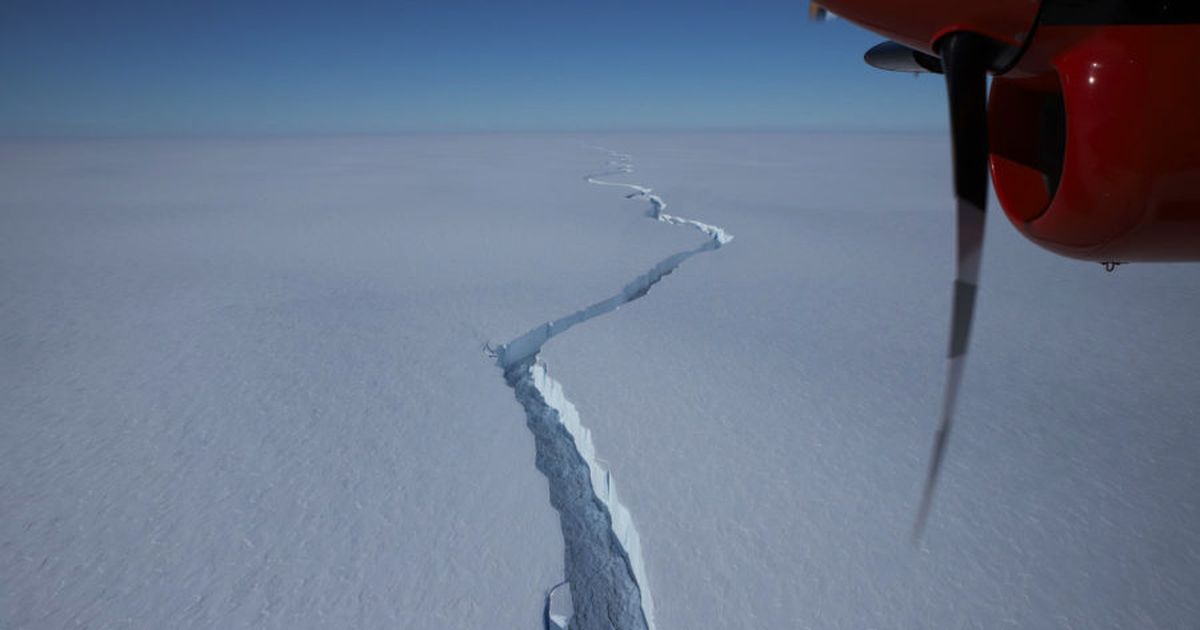
For years, the cracks grew. And in mid-February 2021, a new massive Antarctic iceberg was born.
The British Antarctic Survey released footage last week of the grand crack left by 490 square-mile iceberg A74 (it’s larger than Los Angeles), which snapped off Antarctica’s Brunt Ice shelf. (An ice shelf is the end, or tongue, of a massive ice sheet that floats over the ocean.) Antarctic researchers knew the ice shelf would inevitably shed a big berg, but the question was when.
“Predicting ice cracks on an ice shelf is almost like predicting when an earthquake is going to occur,” Anna Hogg, a polar researcher specializing in satellite observations at the Institute for Atmospheric and Climate Science at the University of Leeds, told Mashable in 2019.
In some parts of Antarctica, warmer ocean waters are now eating away at the bottom of ice sheets, resulting in a serious acceleration of ice loss, which adds significantly to sea level rise. (To learn more, read about Antarctica’s destabilized Thwaites glacier.)
For the Brunt Ice Shelf specifically, Antarctic scientists say it’s still unknown if Brunt will experience a similar increase in ice loss as the planet relentlessly warms. But they’re vigilantly watching with satellites, planes, and drones.
